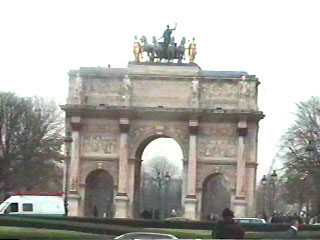
The building, originally a palace for French monarchs, was built in 1546. When finished, the building and grounds covered a total of 48 acres. In 1793 the Louvre was opened as a public museum.
 |
The photo at the left shows one of the entrances to the
famous Louvre museum.
The building, originally a palace for French monarchs, was built in 1546. When finished, the building and grounds covered a total of 48 acres. In 1793 the Louvre was opened as a public museum. |
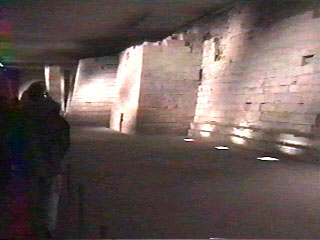
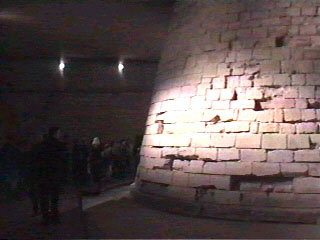
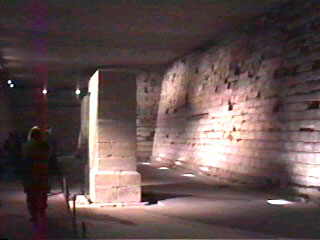
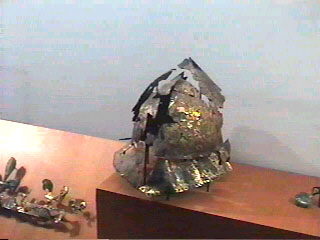 |
This old helmet was found during the excavation of the moat and dates to the origin of the Louvre. |
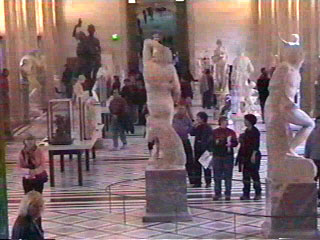
Greek Statues |
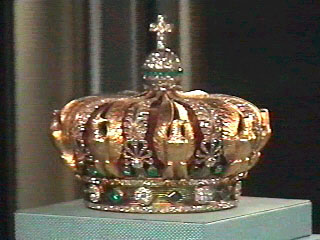
French Crown Jewels |
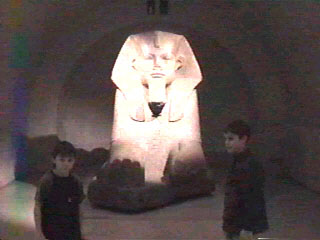
|
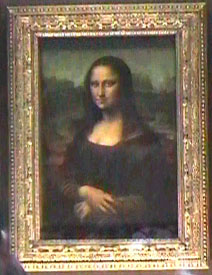
No Subtitle Necessary |
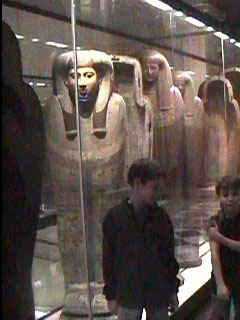
More Egyptian stuff |
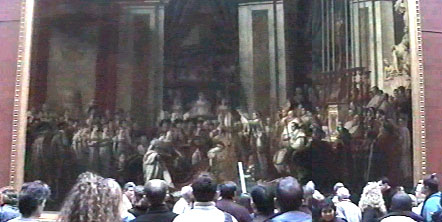
The Coronation of Napoleon, (he's crowning Josephine
-- he's already crowned himself as Emperor)
The Louvre, by far, has the largest collection of historical European artifacts anywhere. If you spent a week at the Louvre, you wouldn't be able to see it all. Only a small sampling is shown here. Do you want to see the rest? Well, get going ... it's well worth the visit.
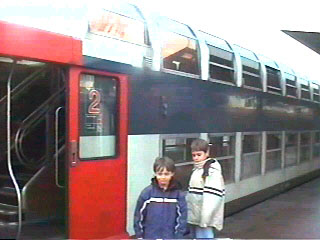 |
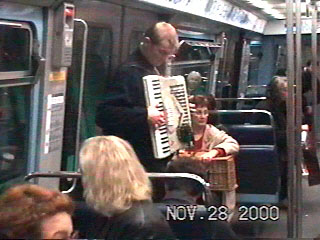 |
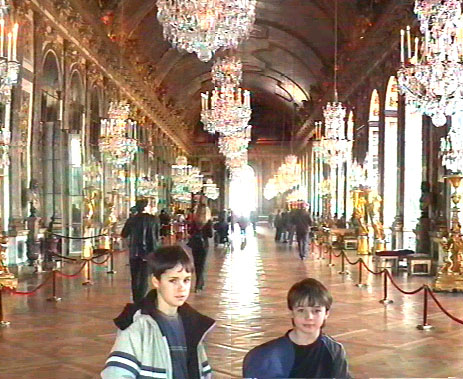 |
The envy of kings everywhere, the Palace of Versailles was the residence of French monarchs for about 100 years until the Revolution of 1789. Originally his father's hunting lodge, King Louis XIV spent half of France's total income for a year transforming the lodge into a palace fit for what he considered himself to be -- France's divine monarch. The extravagance here is unbelievable -- and that's apparently what the hungry citizens of Paris thought too. In 1792 King Louis XVI refused to submit to the demands of the citizens, and in 1793 he, and his queen Marie Antoinette, lost their heads because of it.
|
Imagine what it must have looked like filled with powdered wigs, silk gowns and lit with thousands of candles.
| The grounds are as extravagant as the palace is. Louis even had an orange grove on wheels that could be wheeled in and out of a greenhouse according to the weather. Before the French Revolution the grounds were enclosed by a 25-mile-long fence. | 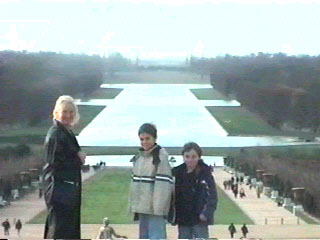 |
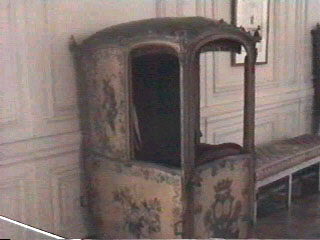 |
This little cart caught our eye -- we'd seen one
of these before.
It's a mini traveling-throne. The king or queen sits in it and four guys carry them around. (Our guide said that they would use it just going from one room to another.) Then we remembered that we had seen one in Philadelphia. It was when we were touring Benjamin Franklin's last home. He had spent several years in Paris and often visited Versailles. In his later years, when he was suffering from gout, he had one built for himself so that he could get to Independence Hall and back home again every day. |
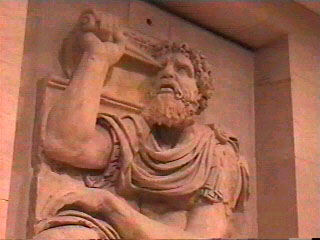 |
Don't you hate it when you poke a dagger into your eye
and give it a twist ....
And don't you hate it when you reach for your goblet of wine but grab your knife instead ... I think that this guy does. |
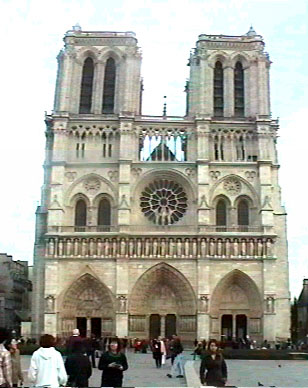 |
OK everybody, take a guess what this place is .....
We'll give you a hint .... it's name is in the title of a Disney animated movie .... |
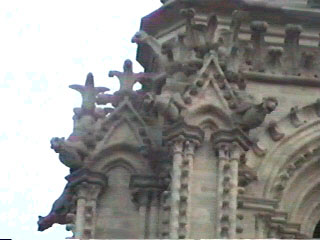 |
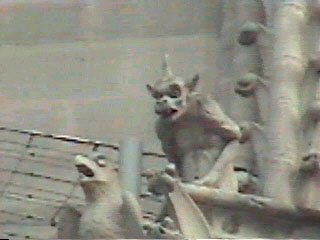 |
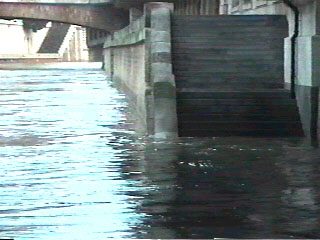 |
Do you remember hearing about the floods in England last
winter? Well, France got their share of the rain too. These
stairs usually go down two more steps to a walkway along the side of the
Seine River. The Seine runs right through the middle of Paris, with
the Left Bank on one side and the Right Bank on the other.
We were so impressed with this city -- it's easy to navigate, not difficult to communicate in, and it reeks of old-world culture and European ambiance. |
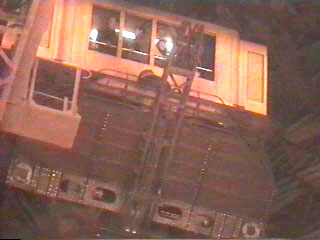 |
Each elevator holds about forty people. The lower elevator took us to the first level. From there we had quite a view. Then we boarded another elevator and rode it to the top. |
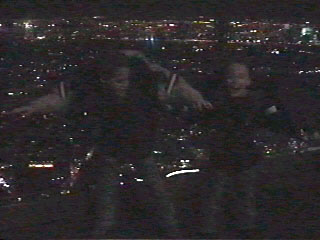 |
It's a little hard to see in the dark, but here Mitch and Max enjoy a little breeze on the windward side at the top of the tower. Winds were near fifty miles and hour, (which was normal.) It's all caged in, so even if the wind picked them up, they couldn't get blown over. |
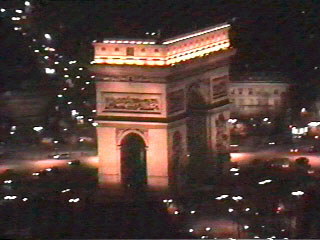 |
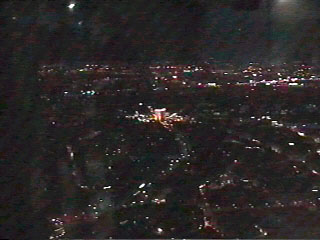 |
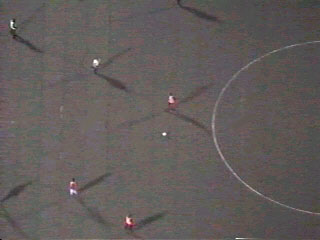
A soccer game |
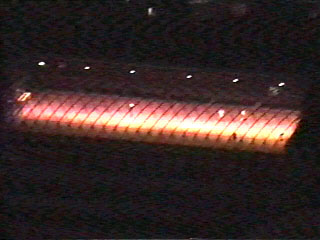
On the top floor of a four story building |
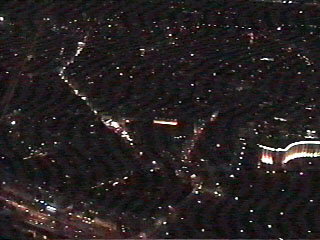
Across town |
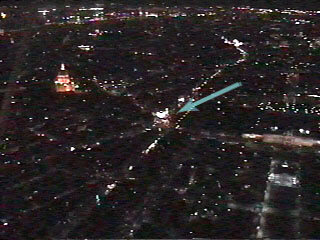 |
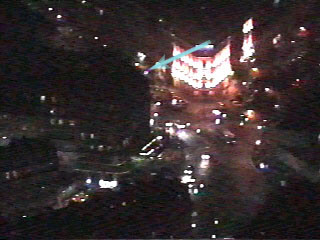 |
|
|
|
|
Next Adventure (Southern France) |